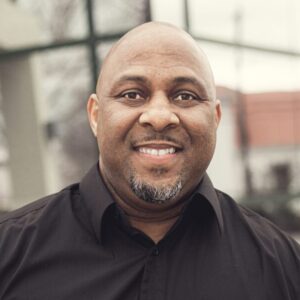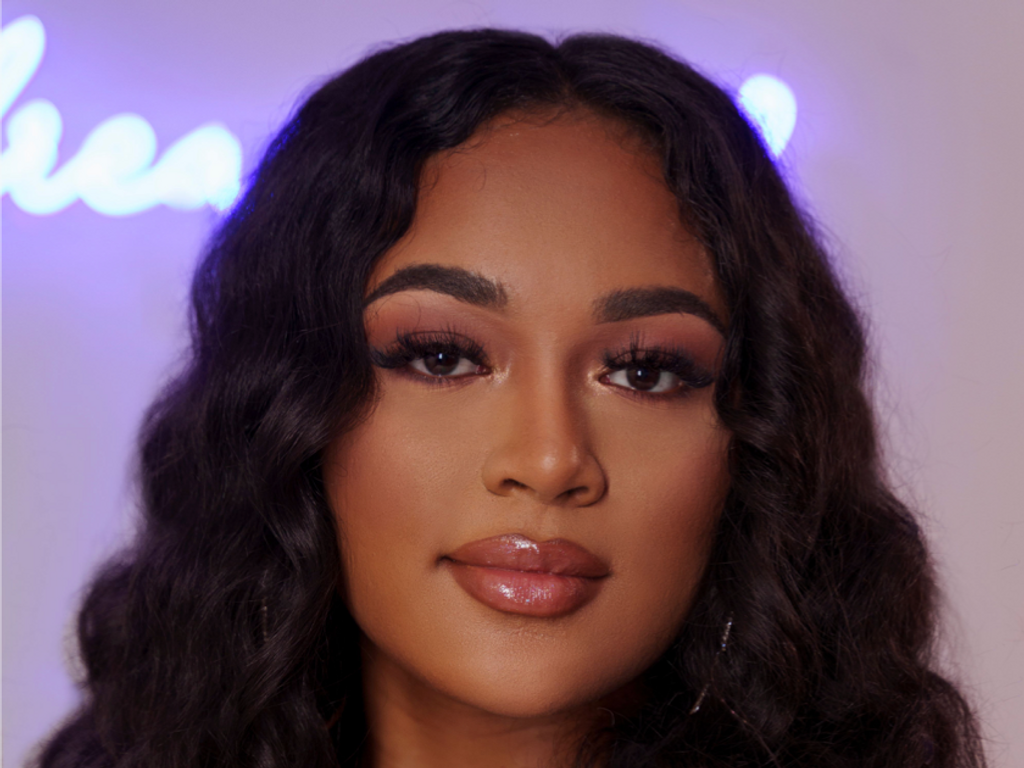Boss: Lex Makes Music, Female Empowerment ‘Personal’ In Latest Release
The path to success is rarely easily. However, in the music industry, being under the watchful eye of an accomplished music exec such as Max Gousse opens doors. Gousse is known for his work with Beyonce, Kelly Rowland and B2K and Adina Howard, as well as putting his stamp on projects such as the “Dreamgirls” soundtrack.
Gousse saw something in Lex — her single “Personal” is a female anthem that sends a message women can put themselves first. “Personal” also found its way onto the soundtrack of the 2020 thriller “Fatale,” starring Michael Ealy and Hilary Swank. While working on other business ventures, Lex expects her EP to be released this summer. She provides music that resonates with women while empowering them.
Zenger News caught up with Lex to discuss the meaning behind her single and discuss future endeavors. Plus, she reveals her dream collaborations on the big screen and in the studio.
Percy Crawford interviewed Lex for Zenger News.
Zenger News: You recently released a new single called “Personal.” Did you have to go for our (men’s) jugular right from the first line?
Lex: People misinterpret that line. I’m not saying … I hate men. Men are cool, most of the time. It’s not that. I definitely don’t want people to think I hate men.
Zenger: No, I’m giving you a hard time. I understood the direction of the song. It basically says it’s OK to focus on yourself sometimes. Am I on the mark with that?
Lex: That definitely was the narrative. That was the message: Prioritizing yourself.

Zenger: I love that song. Where did your passion for singing come from and when?
Lex: I just grew up loving music. I was always around it. I’m from Anchorage, Alaska. I started singing in my grandfather’s church when I was six, and fell in love with having a mic in my hand. It’s definitely when I’m at my happiest. And then I moved to California when I was 12, and everything has been going great.
Zenger: Was it a culture shock to move to California or a smooth transition?
Lex: It was definitely a big shift, because in Alaska everything is more chill and laid-back. There’s not really a creative scene in Alaska. They really don’t have that. But living in California, everything is fast-paced — people work quickly — so just to keep up with everything was a big change. Plus, the weather, too, because it’s cold in Alaska. The crazy thing is, I’m not a big fan of heat, but I’m not a big fan of six inches of snow, either. I’m choosing California over Alaska weather any day.
Zenger: The title of your single is perfect because it symbolizes the bond with your fan base. It’s almost like you’re preparing your fans for the type of music they can expect from you.
Lex: That’s pretty much where I’m at. Being in the music industry and then having a personal life, it’s hard to juggle both — especially a love life. You invest all of yourself into a relationship. And right now, I am investing all of myself into my music and career. I would never want to put somebody through that type of neglect. That’s why “Personal” was the first out-of-the-gate song. It described my mentality as a person and as an artist.

Zenger: You are active on social media, and you seem to have a lot going on at all times. Is it just all about the grind right now for you?
Lex: Definitely! The grind does not stop. I’m focused on being consistent with putting things out, because I think consistency is key.
Zenger: Has anything surprised you about the music industry yet, or have things gone according to schedule?
Lex: There have been some ‘what the fuck’ moments. But those are generally when dealing with people behind the scenes. But I just remove myself from the situation and keep pushing. I never allow it to get the best of me.
Zenger: Max Gousse is managing your career. That is a big deal.
Lex: Max is definitely a heavy hitter. That’s another thing, going back to being consistent, because when Max reached out to me, I was just posting. I had just released my first project. He reached out on Instagram. I met with him. He saw the vision, and it just made sense.
Zenger: When you’re around Max, are you soaking up as much game as possible or asking a ton of questions?
Lex: I’m definitely a sponge. Whenever Max speaks, it’s knowledge to take with you. I learned a lot from him, just as far as the business side of things. He’s good at explaining and making sure that it’s clear, because you know, a lot of artists are just artists. They don’t really worry about the business side. But Max makes it clear what everything is — the ins and outs.
Zenger: Music is always consolidated on a few variables. You obviously have the look. You have an amazing voice — but there is always that intangible. What do you feel will eventually separate you from the pack?
Lex: I hope people fall in love with me as a person, but I think my music. My music is for my ladies. I love empowering them, and I’m a big advocate on ‘Boss Bitches,’ doing you and being bosses of yourself.
Zenger: Is there anyone you would like to collaborate with in the near future?
Lex: There’s a long list of creators that I would love to collaborate with. Drake is No. 1, because just a verse from Drake, I think, would be incredible. Or he can get a hook from me. We can do it, however. Megan Thee Stallion is another one I think we could slide on something. Jhene’ Aiko, I’m a big fan of Blast. I think we’d do something dope. Mozzy is dope, Kendrick [Lamar], [J.] Cole, H.E.R., Summer Walker. The list goes on.
Zenger: Your sound suggests you listen to more than just R&B music. Do you take from different genres and supplement it into your sound?
Lex: R&B is my roots. I love R&B. It has my heart. I’m an R&B singer, but I listen to a lot of rap. The storytelling of that genre I take into my own music. In pop, too, the melodies and switch up of things. I definitely take something from every genre and mix it into my own.
Zenger: “Personal” made it to the “Fatale” movie soundtrack. How did that come together?
Lex: The “Fatale” soundtrack is out now. If you haven’t listened to it, go listen to that now. There are a lot of dope artists on it. My manager hit me and was like, “Yo, we’re working on the “Fatale” soundtrack,” and I heard the soundtrack, and I was lit. I was hype. I was like, “OK, cool,” because I knew it was a dope opportunity, especially just starting off. Then I get the final phone call, and he was: “Personal” made it.” At that point, I’m on cloud nine. That was incredible, and it’s been a big accomplishment as far as this release
Zenger: Has that been your ‘Wow’ moment so far?
Lex: Yeah! And also, because it had been a minute since I had released music, and just seeing people rock with me. Seeing how they reacted to it was another ‘Wow’ moment.
Zenger: Is it imperative to interact with your fans and supporters on social media or do you prefer to keep a distance and let your music do the talking?
Lex: Social media is a great way to network — especially with the pandemic and quarantine. There is a lack of physical connection. Social media is definitely a great platform to connect with your fans; it’s crucial for any artist.

Zenger: What can we expect in the near future?
Lex: An EP from Lex. I’m finalizing that. Hoping in the summer it will be released. You can also expect a movie on TV somewhere doing something, I’m a big fan of The Rock because we’re the same ethnic mix. He’s Samoan and black, and I’m Samoan and black. I think a movie from us would be great for the culture. Definitely a hair-and-beauty line coming real soon, something in fashion.
Zenger: California is still pretty much locked down. What vibes do you like to have when you’re creating? Would you prefer being out and about and creating from experiences or are you more of a secluded creator?
Lex: Honestly, with me, I pull inspiration from any and everywhere — whether it be a story my homegirl told me or a personal experience. Or, I can see it on social media, a TV show or just driving down the street. I’ll see something that sparks inspiration. And then I go into the studio and create from there. It just depends on the vibe that I’m trying to capture. Being in the studio with your own vibes, you can definitely create magic that way, too.
Zenger: Anyone who hears “Personal” will think you were hurt badly in a relationship. Is your music from the heart, personal experience or a combination of the two?
Lex: It’s from the heart, whether I’m experiencing it, or someone else is. But if it’s someone else’s experience, I speak on how I would handle it, that’s why it would be from the heart. As far as “Personal,” it’s really not from one situation, because I get that question a lot. It’s not really personal. It’s personal because it’s like a personal letter. I’m letting it be known that I’m focused on me and focusing on what I love to do. But I love love, so definitely later down the road, that will be in my life.
(Edited by Stan Chrapowicki and Fern Siegel)
The post Boss: Lex Makes Music, Female Empowerment ‘Personal’ In Latest Release appeared first on Zenger News.
 Westside Story Newspaper – Online The News of The Empire – Sharing the Quest for Excellence
Westside Story Newspaper – Online The News of The Empire – Sharing the Quest for Excellence